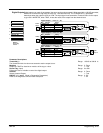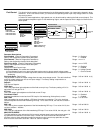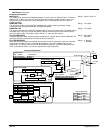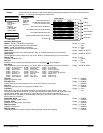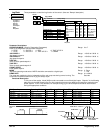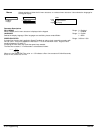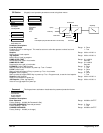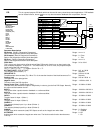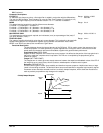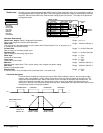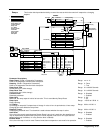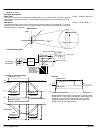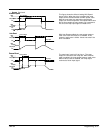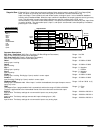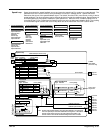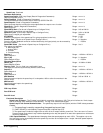
Programming 6-33MN792
PID Continued
Parameter Descriptions
FILTER T.C.
To attenuate high–frequency noise, a first order filter is added in conjunction with the differentiator.
The ratio k of the Derivative Time Constant (Td) over the Filter Time Constant (Tf) (typically 4 or 5)
determines the high–frequency lift of the transfer function. For Tf = 0 this filter is disabled.
Range: 0.000 to 10.000
Seconds
MODE
This determines the law which the profiler follows versus diameter.
For Mode = 0, Profiled Gain = constant = P.
For Mode = 1, Profiled Gain = A * (diameter – min diameter) + B.
For Mode = 2, Profiled Gain = A * (diameter – min diameter)^2 + B.
For Mode = 3, Profiled Gain = A * (diameter – min diameter)^3 + B.
For Mode = 4, Profiled Gain = A * (diameter – min diameter)^4 + B.
Range: 0 to 4
MIN PROFILE GAIN
This expresses the minimum gain required at min diameter (core) as a percentage of the (max) P
gain at full diameter (100%).
Range: 0.00 to 100.00 %
PROFILED GAIN
The output of a profiler block which varies the gain versus diameter. This is primarily to be used with
Speed Profiled Winders for compensation against varying diameter and therefore inertia. When
MODE is not ZERO (see above) this overrides the P gain above.
Range: xxxx.x
Functional Description
The block diagram shows the internal structure of the PID block. PID is used to control the response of any
closed loop system. It is used specifically in system applications involving the control of drives to allow zero
steady state error between reference and feedback, together with good transient performance.
Proportional Gain (PROP. GAIN)
Adjusts the basic response of the closed loop control system. It is defined as the portion of the loop gain that is
fed back to make the complete control loop stable. The PID error is multiplied by the proportional gain to
produce an output.
Integral (INT. TIME CONST.)
The Integral term is used to give zero steady state error between the setpoint and feedback values of the PID. If
the integral is set to a small value, this will cause an underdamped or unstable control system.
Derivative (DERIVATIVE TC)
Corrects certain types of control loop instability and therefore improves response. Helpful when heavy or large
inertia rolls are being controlled. The derivative term has an associated filter to suppress high frequency signals.
Parameter values should be selected to achieve a critically damped response, which allows the mechanics to
track as precisely as possible a step change on the setpoint.
Critically Damped Response
Underdamped
Critically damped
Overdamped
Setpoint
Value
Setpoint
Time
Time



